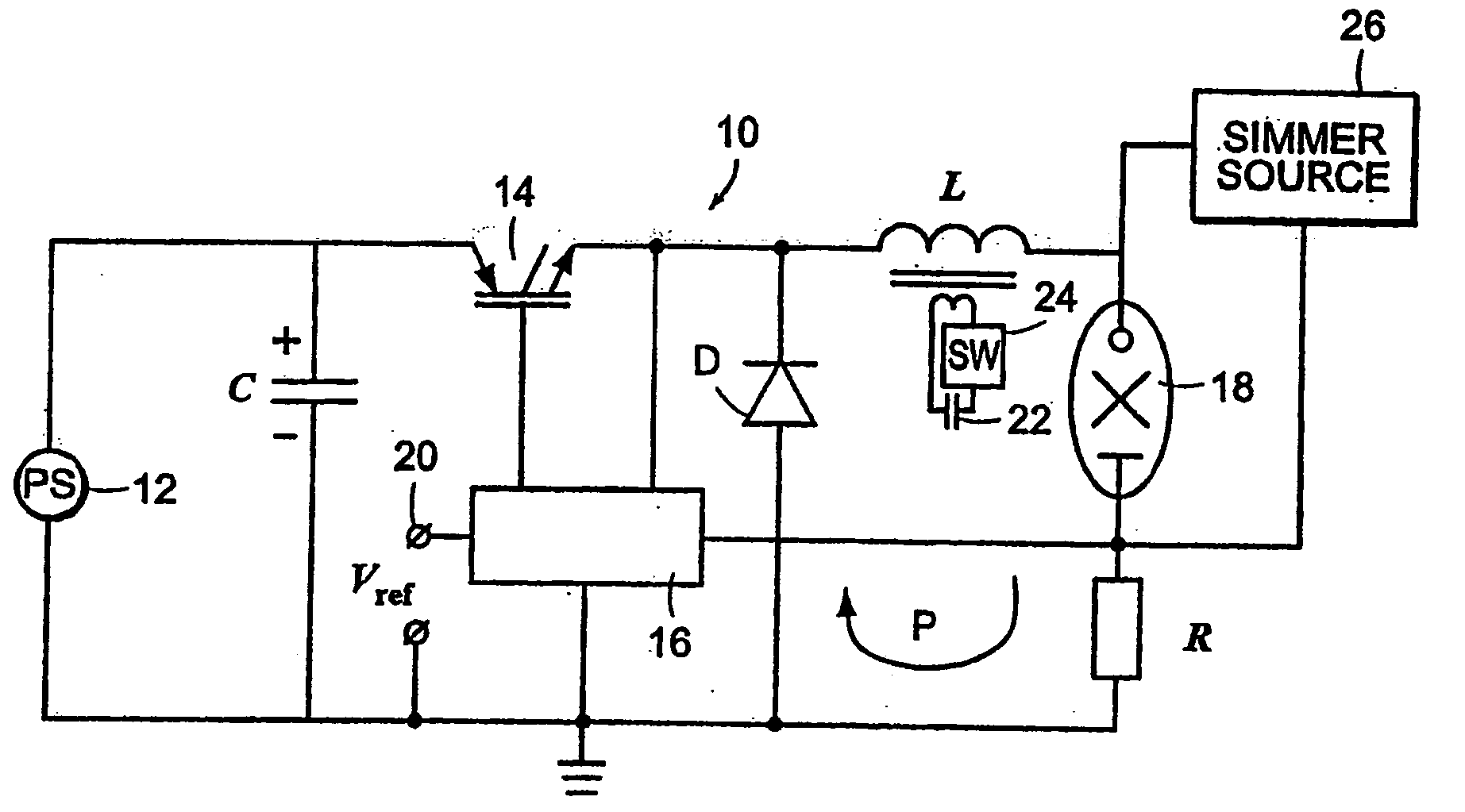Flash lamp drive circuit
a technology of flashing lamps and drive circuits, which is applied in the field of flashing lamp drives, can solve the problems of increasing the size of the capacitor used substantially linearly, not being able to maintain constant power output, and unable to achieve the effect of low loss
- Summary
- Abstract
- Description
- Claims
- Application Information
AI Technical Summary
Benefits of technology
Problems solved by technology
Method used
Image
Examples
Embodiment Construction
[0018] Referring first to FIG. 1, a pulsed flashlamp drive circuit 10 is shown for an illustrative embodiment of the invention. The circuit includes a capacitor C which is connected to be charged from a suitable power source 12. Power source 12 may be a 120 V, 240 V or other suitable line current, which may be suitably rectified or otherwise processed, may be a battery, or may be some other suitable power source. For illustrative embodiments, charge current from source 12 is only a few amps, for example one to two amps. A standard control circuit (not shown), including a switch, is provided to charge capacitor C to a selected preset voltage E and to prevent overvoltage. Capacitor C discharges through a high speed power switch transistor 14 which is connected to be driven from a control circuit 16, an exemplary such circuit being shown in FIG. 2. The output from switch 14 is applied through an inductor L to one side of pulsed flashlamp 18. The other side of flashlamp 18 is connected ...
PUM
 Login to View More
Login to View More Abstract
Description
Claims
Application Information
 Login to View More
Login to View More - R&D
- Intellectual Property
- Life Sciences
- Materials
- Tech Scout
- Unparalleled Data Quality
- Higher Quality Content
- 60% Fewer Hallucinations
Browse by: Latest US Patents, China's latest patents, Technical Efficacy Thesaurus, Application Domain, Technology Topic, Popular Technical Reports.
© 2025 PatSnap. All rights reserved.Legal|Privacy policy|Modern Slavery Act Transparency Statement|Sitemap|About US| Contact US: help@patsnap.com



